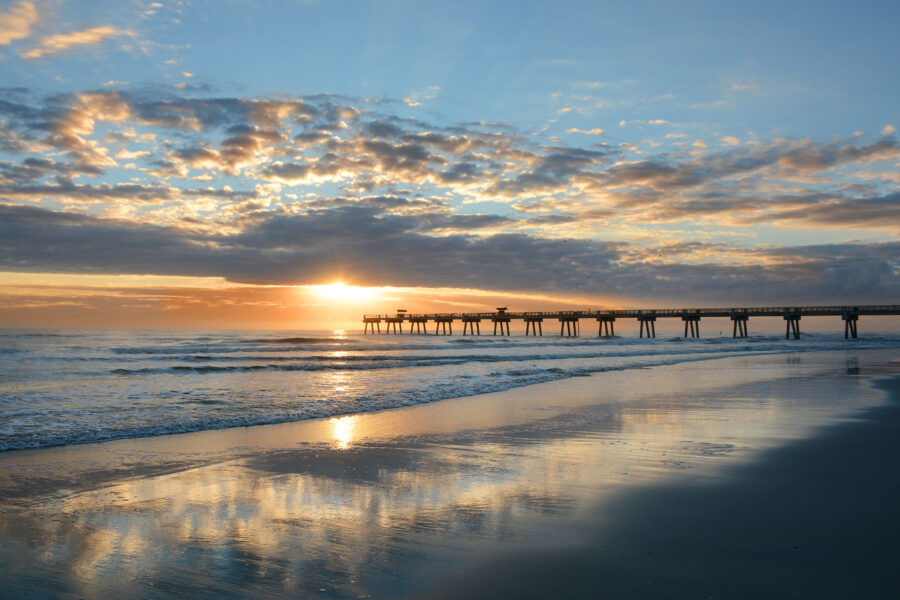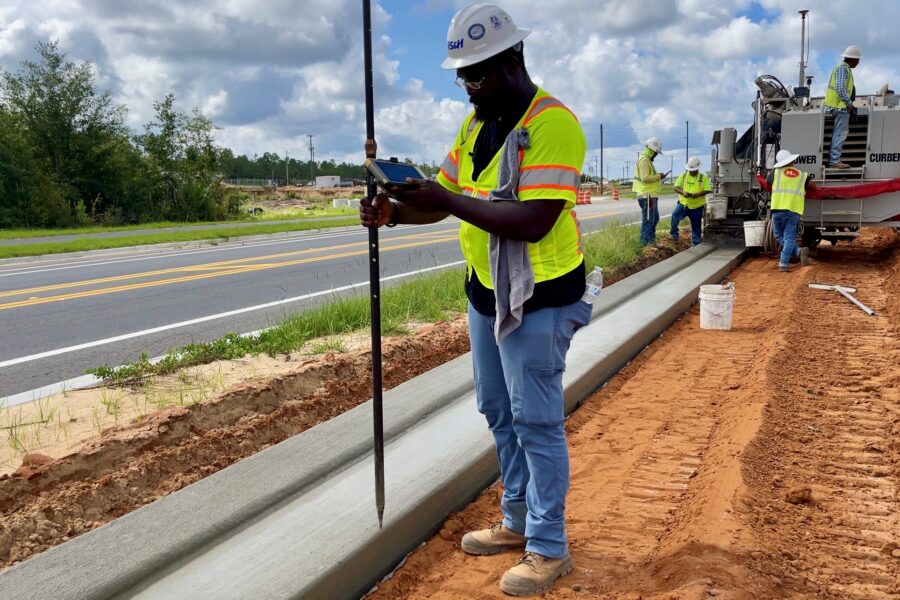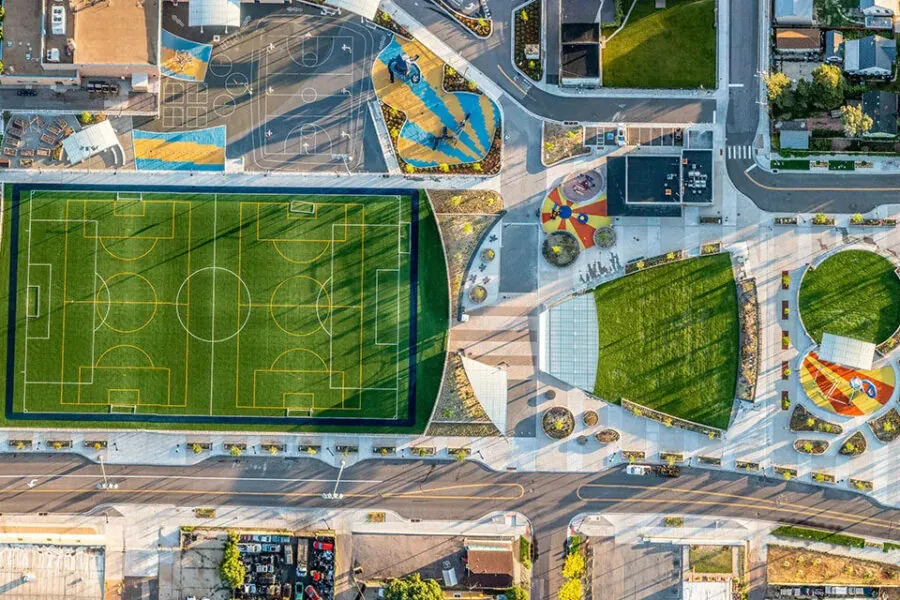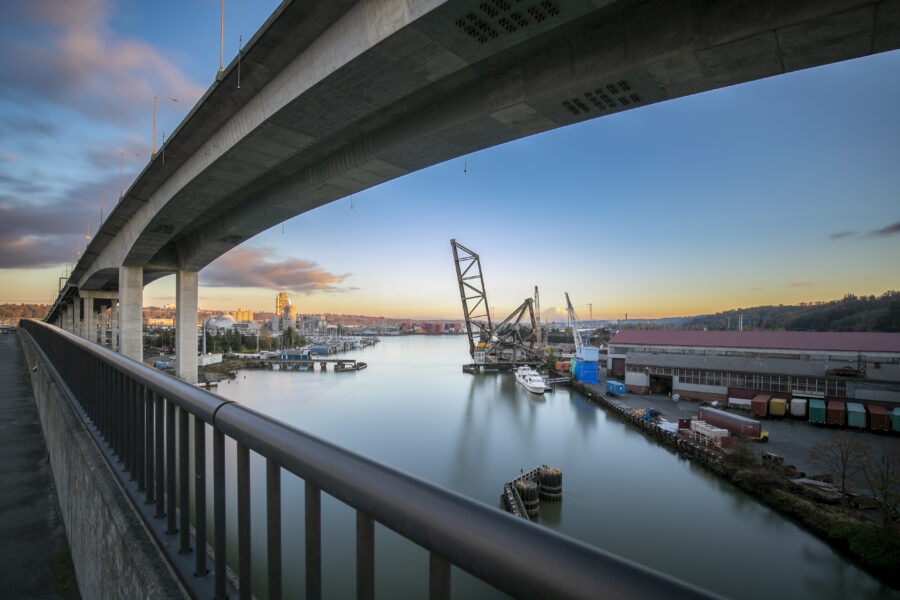Rebuilding Resiliency: Where Strategic Design Meets Structural Strengthening

As the environment becomes more unpredictable and serious weather events increase in strength and frequency, coastal regions will be particularly affected. As a result, cities near the coast are considering climate change as they rehabilitate existing structures and build new ones.
Resiliency isn’t always synonymous with sheer strength, though. In fact, our team has recently worked on several projects in which resiliency came from a mixture of structural reinforcement and strategic design elements.
Jacksonville Beach Pier Height
Case in point: the Jacksonville Beach pier, a third of which was destroyed by Hurricane Matthew in 2016.
In this rehabilitation project, we provided necessary structural reinforcement to the pier, but we also made the pier more resilient by elevating its main structure.
The existing fishing pier substructure and superstructure were not above the hurricane’s wave heights. As waves crashed into the pier, they impacted large, flat areas of concrete caps and beams. The wave pressure led to irreparable damage in some elements and complete collapse of others.
After consultation with wave force experts and a design storm discussion with the client, RS&H determined that raising the superstructure and substructure caps above potential storm wave heights was crucial to the design life and resiliency of the new pier sections.
Storm Level Strategy
Resiliency must be implemented responsibly. As cities work to determine the needs of their structures, they must consider risks and costs in the short-term and the long-term. The most critical design consideration for the fishing pier retrofit was the design storm level to use.
Design storms are expressed in frequency of occurrence, but the nomenclature can be confusing. Typical design storms seen in civil works are 25-year, 50-year and 100-year storms. Some might assume a 100-year storm is the size of storm that happens every 100 years. Not so. Rather, a 100-year storm is one that has a 1 percent chance (or 1-in-100 chance) of occurring in any given year.
The original Jacksonville Beach pier was built to withstand a 20-year storm, or one with a 5 percent chance of occurring in any given year.
After Hurricane Matthew, which was back-calculated to be a 28-year storm in Jacksonville, it was clear the pier needed to be higher and have stronger structural members to survive another, similar storm.
But other factors had to be considered in the determination of the new design storm level. For instance, Jacksonville does not have a history of large-scale hurricane impacts. The pier is also not a residential or commercial structure. Areas with residential or commercial structures such as hotels require a higher storm level of protection than those like the pier.
With that information in mind, the rehabilitated pier was upgraded to withstand conditions during a 50-year storm. This provided a stronger structure that was proportional to the level of risk, short-term and long-term costs, and the area in which the pier is located.
SR A1A Drainage
Similar considerations were accounted for with State Road A1A in St. Lucie County, which is more prone to experience tropical storm events. This section of SR A1A runs along a narrow barrier island between the Atlantic Ocean and the Indian River Lagoon.
Because there is an increased likelihood of larger and more frequent storm activity, RS&H worked to find a solution relative to an increased likelihood of flooding events on the road. The team ended up designing and installing a bulkhead wall to prevent the undermining of the road during major storms.
A Resilient Future
Ultimately, the future of many transportation-related structures will depend on our ability to come up with strategic solutions to combat the effects of often complex weather patterns.
Sometimes, the solution comes in the form of elevating a structure. Sometimes, it’s construction of a protective wall. But whatever the project, it always requires an ability to look at problems as opportunities for innovation.




